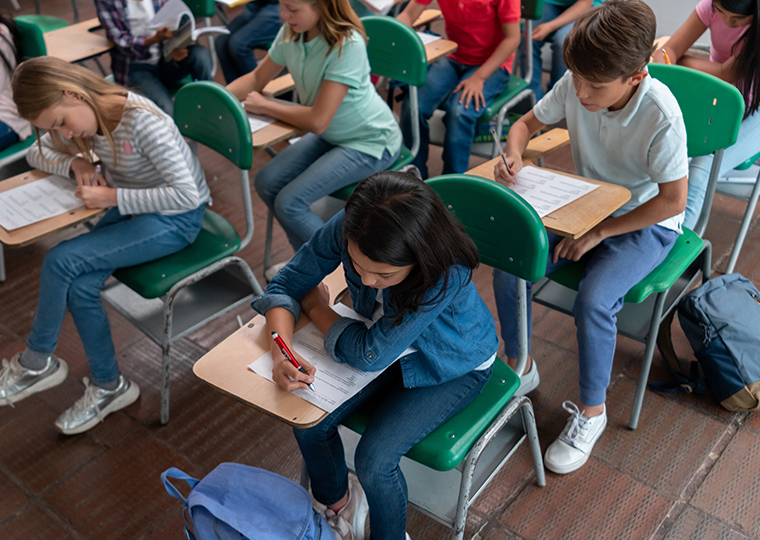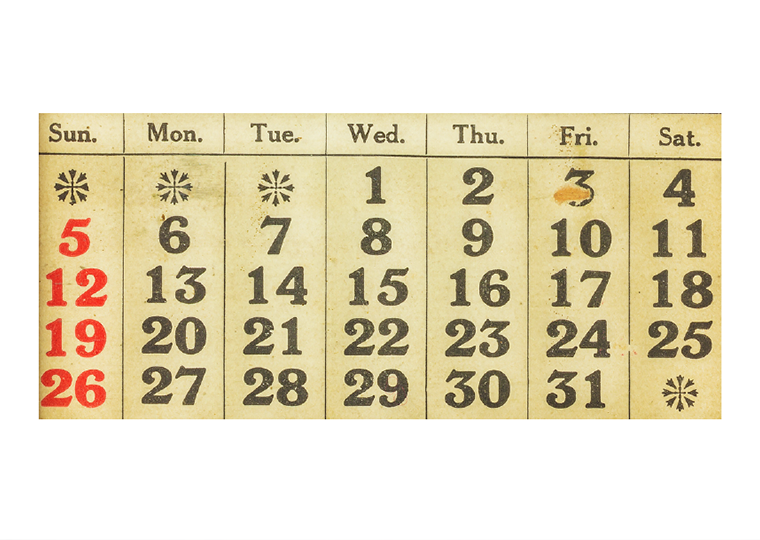Buyers find the tomes heavy, costly and too frequently revised, while sellers might like to kill the used book market entirely
A working paper by UCLA Anderson’s Matt Schmitt and Tongtong Shi of Analysis Group, an economic consulting firm, suggests that college textbook publishers, if only they could drive a stake through the heart of the used book market, might enjoy profits 42.6 percent higher than under current conditions.
Driving a stake through something, of course, is a widely felt sentiment when it comes to college textbooks. If you’re a student, or parent of a student, you’ve grown accustomed to paying $120 a pop for new print texts. There are potentially less costly or more convenient options to buying a new print volume and later selling it into the used book market: digital copies with no used-sale value; loose leaf format, also intended to discourage repeat use; rental copies (which help keep used copies off the sale market); and used printed volumes. One might need to have completed the introduction to economics course to fully crunch the numbers on these choices across a full load of classes.
Most durable goods industries exist with a parallel used market. About 70 percent of total car sales in any given year are of used vehicles, and auto makers have responded with dealer-certified used vehicles and transferable warranties, helping themselves to a piece of the action in the used market. But digital goods are a particularly dicey used market. Video gaming almost wiped out its resale industry by moving games online. GameStop, once a hugely successful retailer of new and used video games for consoles, lost about 75 percent of its value in that transition.
Opt In to the Review Monthly Email Update.

College textbooks are an unusual market. The student has to buy precisely the book chosen by the professor (sort of, see below). The books are expensive to produce. And though they can be durable sellers over time, they aren’t runaway best-sellers like The Da Vinci Code.
Schmitt and Shi gathered data from 1,800 university bookstores in the U.S., representing about 60 percent of total college enrollment. The data covers 5,000 books, but the researchers focused on a few dozen big sellers — the textbooks that are required in introductory and other often-taken classes and used year after year. The top 1 percent of books account for 52 percent of new book revenue, they found; the bottom 90 percent account for just 11 percent of revenue. The sales data covered the years 1997 to 2007. (The market has changed since then and the university store data set misses Amazon results, which were rising during the period studied.)
Using that data, the authors developed a model to predict market behavior. The study’s model set used textbook prices at roughly 75 percent of new, because university bookstores routinely set prices there in the early 2000s. (Online companies like Amazon.com now sell used textbooks at prices determined by supply and demand, which a 2015 study found were about 58 percent of new edition prices. Recently, Schmitt and Shi ran the study’s model using market clearing prices — the kinds students find online — for used books. They found that such Amazon pricing sent even more students to used textbooks.)
Even before that, new sales weren’t all that impressive. In the fall semester of 2001, 17 percent of the estimated enrollment for classes utilizing N. Gregory Mankiw’s Principles of Macroeconomics bought a new copy of the book at an average price of $115, while 28 percent of the estimated enrollment bought a used copy at an average price of $84. OK, that’s 45 percent total. Some people shared, some bought used or new outside the university bookstore system, some borrowed, some, ahem, did without.
The accepted way to boost new book sales is to offer a revision, leaving the used copies useless. All popular textbooks are revised within eight semesters of publication, most commonly after six semesters. The study found that following a publisher’s revision, even when used volumes were available, sales of the new edition rose from 24 percent to 31 percent among students.
Revisions are such moneymakers, the study finds, that shortening the time between them would raise publishers’ profits more than raising the books’ cover prices would. But publishers could achieve bigger profit gains — about 42.6 percent above profits on standard revision schedules — if they stopped revising and killed the used textbook market altogether, the study finds. About half of that windfall would come from eliminating the cost of revisions, and about half from additional new sales, according to the findings. (This is extreme; revisions over time would be required as fields of study evolve.)
Perhaps surprisingly, new textbook prices would fall by about 6.9 percent if the used market disappeared, according to the study. Like a car with a low resale value, the value of a textbook with no hope of resale is lower than one the buyer can recoup some investment on later, the authors explain.
Mankiw, the Harvard professor and author of introductory (ninth edition) and intermediate (tenth edition) economics textbooks, defends revisions in a recent paper. “I have spent much of my career writing and revising undergraduate textbooks,” he writes. He notes the need to keep up with the field, having first added behavioral economics in the third edition of his principles book, and a discussion of bank capital and leverage to recent editions following the 2008 financial collapse. He thanks President Trump for making passages on trade tariffs newly relevant.
Mankiw writes that books can become bloated in the review process: “Reviewer A wants a discussion of the Herfindahl index, reviewer B wants a presentation of the kinked demand curve model, reviewer C wants a definition of the Gini coefficient, and so on. The editor, who has little training in economics, then recommends adding material,” he writes. “When the book is published, professors A, B, C, etc. — and especially their students — all agree that it is too long.”
Mankiw estimates his books have sold about four million copies.
Featured Faculty
-
Matthew Schmitt
Adjunct Assistant Professor of Strategy
About the Research
Schmitt, M., & Shi, T. (2018). Secondary markts and firm profits: Evidence from college textbooks.






